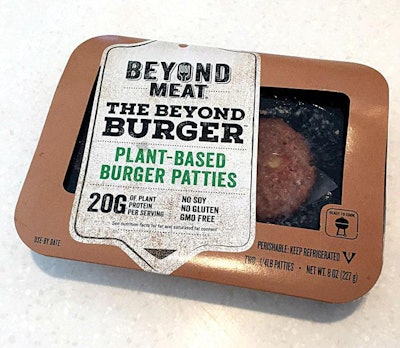
Plant-based proteins have seen huge growth in recent years, but the sector may see some headwinds in the future
There are multiple factors driving the growth of plant-based alternative proteins, as well as multiple challenges facing them.
That’s according to Christine McCracken, executive director of animal protein at Rabobank, who spoke January 29 at the Feed Strategy Conference, hosted by WATT Global Media at the 2020 International Production & Processing Expo in Atlanta.
While the plant-based protein sector is relatively small – US$1 billion compared with total global protein at US$1.6 trillion – growth in the sector has been massive. Between 2012 and 2018, alternative proteins saw a 13% CAGR in the U.S. and 15% CAGR in the EU.
So what are the drivers of that growth?
- Consumers are striving for “better-for-you” products. Two-thirds of consumers say they are looking for healthier products.
“That’s their No. 1 concern and really why they’re looking for these plant-based products initially,” McCracken said. However, there is some disagreement over whether the plant-based products on the market are healthier than traditional proteins.
- A growing interest in sustainable protein. Consumers may believe plant-based proteins are more sustainable than traditional proteins.
“There’s been a lot of attention put on how many resources traditional animal-based protein contributes to greenhouse gases and water use,” she said. “It is obviously overlooked how much progress those in the developed economies have made in reducing their environmental footprint.”
- Consumers are looking for something new and exciting.
“I think they’re very open minded and they like to change and I think they like choices and I think that, in fact, could be as much of the driver as anything,” she said.
- Consumers are looking for a more versatile protein option.
Millennials surveyed were “as likely to get their protein source from protein bars as they were from pork and seafood and they viewed it as the ‘ideal’ protein,” she said.
- Animal welfare advocates are gaining traction.
Children in the U.S. are regularly fed meatless meals at school and “they are taught in science (class) that animal agriculture is ruining the environment,” McCracken said. “What’s concerning to me is these are the consumers of tomorrow and if that’s what they’re being taught at this point, it’s rather disruptive.”
Challenges for plant-based proteins
But, along with all of those drivers of growth, there are multiple challenges facing alternative proteins.
- Consumer acceptance: It is still unclear whether the growth in the plant-based protein sector is a fad or a long-term trend.
- Distribution: As more consumers are shopping online, they don’t see the alternative protein options as much as they would if they were shopping in the store.
- Cost competitiveness: While costs have come down over the years, alternative proteins are still more expensive than some traditional options.
- Regulatory challenges: McCracken said there is a lot of debate about how new technologies are regulated, such as whether plant-based alternatives can use the words “meat” or “milk” on their labeling.
- Financing: Supply chain will initially be an issue as there are many companies competing for a somewhat limited ingredient supply. Short term, this could inhibit growth in the industry.










